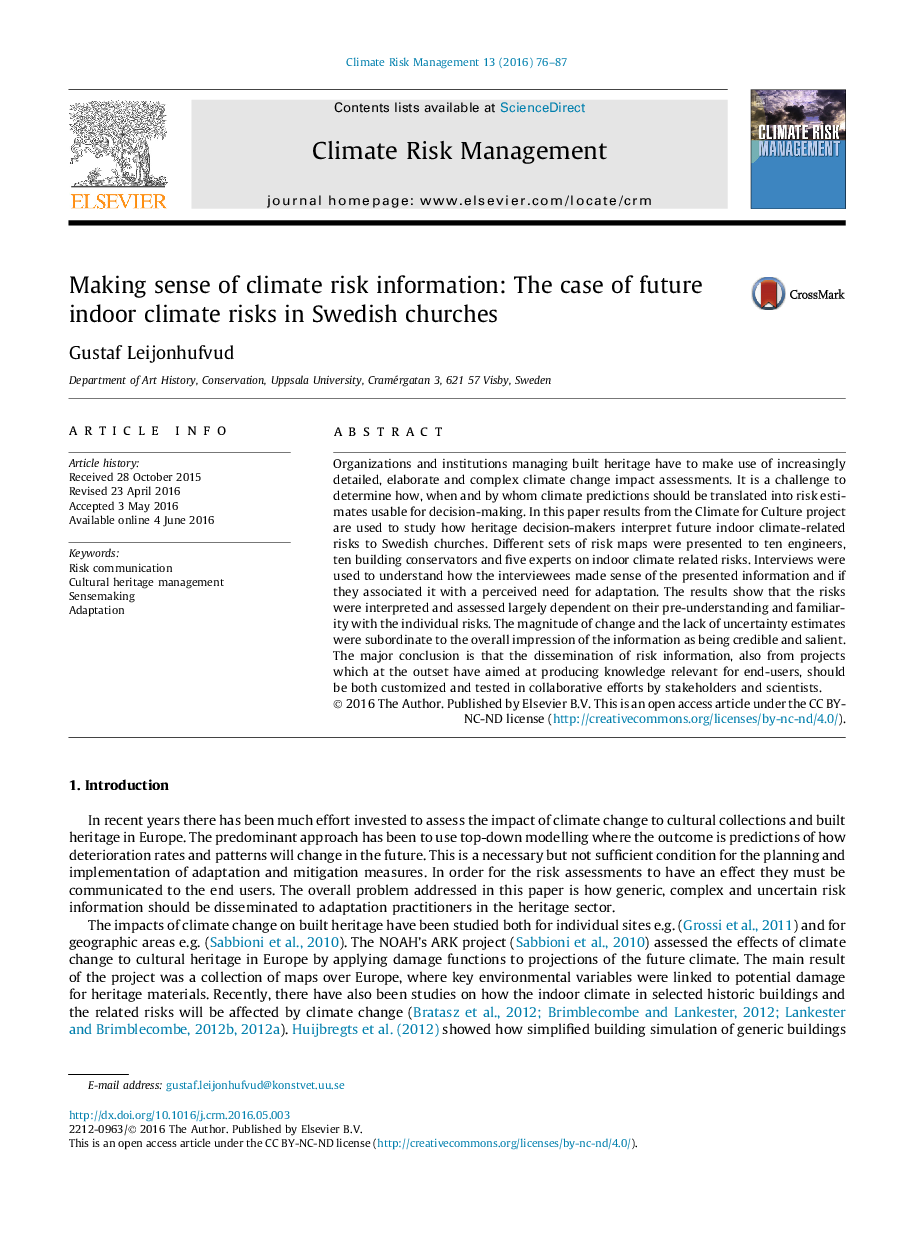| Article ID | Journal | Published Year | Pages | File Type |
|---|---|---|---|---|
| 5115305 | Climate Risk Management | 2016 | 12 Pages |
Abstract
Organizations and institutions managing built heritage have to make use of increasingly detailed, elaborate and complex climate change impact assessments. It is a challenge to determine how, when and by whom climate predictions should be translated into risk estimates usable for decision-making. In this paper results from the Climate for Culture project are used to study how heritage decision-makers interpret future indoor climate-related risks to Swedish churches. Different sets of risk maps were presented to ten engineers, ten building conservators and five experts on indoor climate related risks. Interviews were used to understand how the interviewees made sense of the presented information and if they associated it with a perceived need for adaptation. The results show that the risks were interpreted and assessed largely dependent on their pre-understanding and familiarity with the individual risks. The magnitude of change and the lack of uncertainty estimates were subordinate to the overall impression of the information as being credible and salient. The major conclusion is that the dissemination of risk information, also from projects which at the outset have aimed at producing knowledge relevant for end-users, should be both customized and tested in collaborative efforts by stakeholders and scientists.
Related Topics
Physical Sciences and Engineering
Earth and Planetary Sciences
Atmospheric Science
Authors
Gustaf Leijonhufvud,
